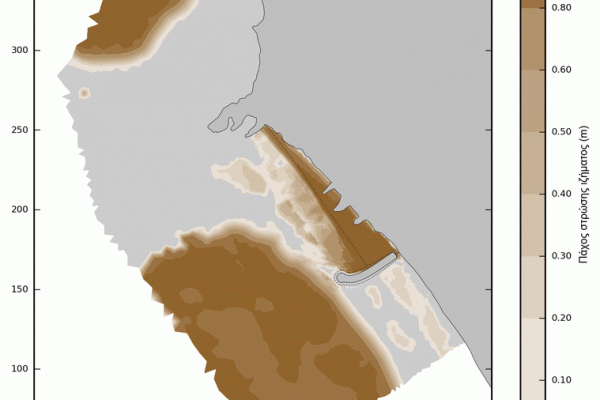Beach nourishment and protection of Elea Village hotel beachfront - Chalkidiki Region
In December 2015, ACROTEL hotel group commissioned CNWAY to carry out all necessary studies required to permit and construct beach nourishment and protection works at the beachfront of hotel unit Elea Village in Nikiti.
Nikiti is a coastal town and capital of Sithonia municipality. It is a modern tourist destination with hotels, restaurants and coffee bars along the beach, that are heavily populated during the summer months. The beaches of Nikiti are characterized by turquoise waters, white sand and pine trees that reach over the sea. It is situated 105 km away from Thessaloniki and 36 km away from the capital of Chalkidiki, Polygyros.
The necessary studies comprise of:
- field survey (bathymetric and topographic) and marine vegetation mapping
- preliminary/conceptual design
- sediment transport study
- environmental permitting
The sediment transport study is aimed at evaluating the performance of the proposed works layout as well as assessing the impact on the existing sediment diet. The implementation of a sediment transport and coastal morphodynamics model is an integral part of the sediment transport study.
The model provided the means to optimize the nourishment parameters and retaining works layout, as well as to calculate an estimate of annual sediment loss volume.
The simulation of sediment transport was carried out with the TMS (Telemac-Mascaret System) suite, which relies on the coupling of wave propagation models (TOMAWAC and ARTEMIS), hydrodynamic model (TELEMAC2D) and sediment transport model (SISYPHE). Setting up the model required the following data collection and preparatory tasks:
- Shoreline investigation
- Seabed sediment sampling at varying depths
- Bathymetric and topographic survey
- Photographic documentation / Aerial mapping
- marine vegetation mapping
- wind-wave climate estimation
The wind and wave characteristics in the project were extracted from regional Skiron and WAM models and spanned between years 2001 and 2010.
The modeling accounted for grain size distribution, spatial distribution and availability of sediment in the study area, as well as spatial distribution of the respective friction coefficients based on the nature of the sea bed (sand, rock outcrop, seagrass, rubble mound, etc.). Careful interpretation of the natural conditions enhances the accountability of the results.
During the realisation of the study, the layout of the sediment retention works was optimised and the annual sediment loss volume for the selected nourishment grading was calculated. It was also demonstrated that the proposed works have no impact on the existing sediment transport balance.
Model facts:
- TOMAWAC-ARTEMIS-TELEMAC2D-SISYPHE chaining.
- Model area approximate dimension 1000x400m, 10.500 nodes and 20,000 elements
- 4 project layouts, existing conditions plus three iterations of the proposed works
- One year simulation duration, a total of 16 wave conditions ranging from 0,37m to 2,08m.








